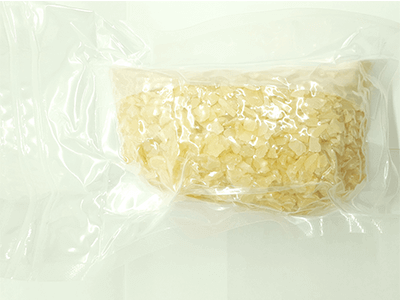What Is Sodium Persulfate?
Sodium persulfate, also known as sodium luoxodisulfate or sodium persulfate, is a substance with the molecular formula Na2S2O8.
Sodium persulfate has two types: peroxomonosulfate (molecular formula: H2SO5) and peroxodisulfate (molecular formula: H2S2O8), but the term sodium persulfate generally refers to the divalent sodium salt of peroxodisulfate. The CAS number 7775-27-1, which is a unique number for a chemical substance, is assigned to sodium persulfate. The molecular weight is 238.1 g/mol.
At room temperature and pressure, it exists in a white crystalline state and has a slightly pungent odor. Its solubility in water is 556 g/L at 20°C, but it is difficult to dissolve in ethanol and is easily degraded in ethanol. Aqueous solutions are neutral or slightly acidic. No boiling point or melting point is observed, and when heated, it decomposes at temperatures above approximately 180°C.
Uses of Sodium Persulfate
Sodium persulfate is used industrially for its use as a strong oxidizing agent. Specifically, it is used as a polymerization initiator for synthetic resins and fibers, as an etching agent for printed circuit boards, and as a surface treatment agent for metals.
Among these, it is most commonly used as a polymerization initiator for synthetic resins and as an initiator in radical polymerization reactions. Radical polymerization reaction is a type of polymerization reaction in polymer chemistry, in which polymer chains are elongated by radicals as reaction centers.
The decomposition of sodium persulfate produces sulfate radicals, which in turn draws hydrogen or electrons to initiate a chain polymerization reaction. This process yields polymers such as polyethylene, polyolefin, and polystyrene.
One application that has been attracting attention in recent years is the use in the oxidative decomposition of toxic substances. Examples include the decomposition of ammonia nitrogen, which causes eutrophication in wastewater, and decomposition of halogenated hydrocarbons, which are soil pollutants. Sodium Persulfate’s strong oxidizing power and the fact that the product of decomposition is sulfate ions, which are abundant in the natural environment, makes it suitable for these applications.
Properties of Sodium Persulfate
Sodium persulfate and other peroxo-sulfates are unstable and easily reduce themselves to generate sulfate oxides, which are oxidizing agents. They are unstable with respect to heat and temperature and decompose when heated, producing toxic and corrosive fumes (e.g., sulfur oxides).
It is also highly reactive, with strong flammable and reducing substances, metallic powders, and strong bases. When in contact or mixed with alcohol, it decomposes, separating the oxygen and producing sulfur dioxide, which is highly poisonous. Due to the nature of the oxygen produced during decomposition, it is not itself flammable, but it helps other substances to burn.
Other Information on Sodium Persulfate
Safety of Sodium Persulfate
In terms of safety for humans and animals, its oral toxicity is not high, being class 4 of the GHS classification, but it is highly irritating to the respiratory organs and skin due to its oxidizing power. In addition, decomposition products and mists containing decomposition products may be highly toxic. Therefore, appropriate protective equipment, including respiratory protection, must be worn during use, the storage environment must be prepared to prevent unexpected decomposition, and handling must be conducted in a manner that avoids mixing with other products.
From the viewpoint of preventing fires and explosions, they are oxidizing solids that help combustion when they come into contact with combustibles. In addition, it reacts violently with metals and reducing substances. Therefore, mixing with these substances must be avoided.
